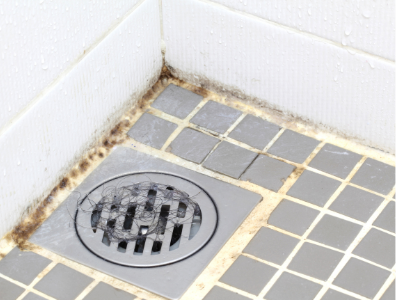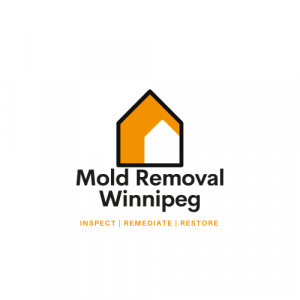WHAT CAUSES MOLD IN A HOUSE?
In the constant battle against mold growth, homeowners and business owners require intervention to keep molds from growing quickly. Mold only requires a bit of food and moisture for it to grow so rapidly that there is no time left before another infestation occurs again.
In order to prevent mold from growing in your house, it's important that you understand what causes mold. While dark green or black patches are easy for anyone to identify as a sign of possible growths of fungus and bacteria, the question "where does mold come from?" is more nuanced than one might think.
The source of a problem is not always where it becomes visible. For example, the root cause may be that there's lack of sunlight and too much water in one area while mold appears on another part because you don't have enough ventilation or dry out damp areas often enough.
Professional mold detection and removal services are trained to locate the moisture source and assist with its removal and clean-up.
Below, we examine some of the main causes of mold in homes and where it comes from.
THE CONDITIONS MOLD NEEDS TO GROW
A few conditions are needed for mold to spread throughout your home or business. There are many different types of molds, but most thrive in these conditions.
TEMPERATURE
Different species of mold can survive and thrive in a wide range of temperatures--from below 0 to over 40 degrees. However, most find an ideal temperature between 25-30 degrees, with the exception that they won't grow when it's colder than 4.4 degrees Celsuis
Most refrigerators are kept at around 2-4 degrees Celsius because many dangerous kinds of mold won't grow in these temperatures. If you leave your sandwich or strawberries in the fridge for too long, they'll start growing mold which might get out of hand and spread to other foods. But as long as you throw it away right away and wash the container thoroughly, there shouldn’t be any danger posed by eating food with such a small amount of mold on them so that no one gets sick from doing this once or twice!
Even if you live in an area that's relatively warm and humid, chances are there aren't any mold problems. But it is important to keep your eyes on these areas of the house - especially bathrooms, showers, laundry rooms/utilities room (if separate), kitchens; also attics and basements.
MOISTURE
Fix Your Leaking Faucets! Mold can develop in as little of 48 hours. And it's important to fix moisture problems right away, which is why you should address that leaky faucet soon before the problem gets worse and more expensive than if done earlier on.
When there is moisture in your home, it can lead to mold and mildew forming. To avoid this problem you should make sure the humidity level of any space stays under 50%. If you want more air flow open up windows or purchase a good dehumidifier.
FOOD SOURCE
Mold is a living, breathing organism that needs to eat just like we do. What does mold eat? Well it eats and metabolizes nearly all organic carbon-based matter such as wood, fabric, drywall or carpeting.
DARKNESS
Mold loves to grow in the dark. Since it can tolerate indirect sunlight and even some direct sun, if left alone there's a good chance that mold will become visible only once you have quite severe water damage or other big problems on your hands.
This is an important reminder that mold often grows in places you can't see. The visible patches of mold are likely just the tip of the iceberg and to find out more about what's hiding behind walls, under carpet or floorboards, or within insulation we should contact a technician who specializes in the professional mold removal process.
If you want to be able to breathe in your home, it is important that you check everywhere for mold. Crawl spaces, storage areas and attics are often overlooked when looking for signs of mold but if left unchecked they can cause serious health issues such as asthma or even death!
OXYGEN
Mold species are classified as obligate aerobes. Like us, they need oxygen to survive and grow - but not reproduce. Air is essential for spores to spread throughout the home because without it, mold can't thrive in its environment.
TIME

Leaks are a common cause of mold growth, so it's important to get them fixed as soon as possible. If not taken care of quickly enough, the spread can be rapid and devastating in some cases.
If the area of mold is over 1 square meter, it's strongly advised to contact a remediation service for professional removal.
WHAT CAUSES MOLD TO GROW IN HOMES, APARTMENTS, & BUSINESSES?
HUMIDITY
Heavy rain or humidity can cause unwanted growth in your home. To prevent this from happening, you need to use a hygrometer that measures the levels of moisture and adjust accordingly by keeping it below 50%. Ideally, between 30-50% is recommended for optimal results.
Not only is humidity one of the causes of mold, but it also means that standing water and damp materials in the home may take longer to dry out. These wet surfaces can then become infected with spores as well.
LEAKY PIPES OR LEAKY ROOF

When a leak is hidden behind walls, under floors or otherwise out of sight it can go undetected for weeks on end. This causes damage to the structure and contents in your home which might lead to dangerous black mold growth where you least expect it, posing serious health risks.
CONDENSATION BUILD-UP

Condensation easily builds up in various parts of the home. These surfaces include metal piping, concrete walls, and floors - anywhere where there's a fluctuation between high and low temperatures on an extremely regular basis. Mold thrives under these conditions because it feeds off the moisture that builds up as well as organic material such as carpeting or wood flooring.
POOR VENTILATION
Another one of the most common causes for mold in homes is poor ventilation. Without proper airflow, wet areas dry more slowly and create ideal conditions that lead to an infestation. Thus, bathrooms are especially risky as well as basements or attics without good air circulation from fans or vents.
WET CLOTHING
Wet clothes left on the floor are a breeding ground for mold growth. Molds not only grow in these conditions, but they also attach to surfaces like carpet and wood floors which makes it easier for them to spread throughout your home.
To avoid creating ideal growing conditions, make sure you air dry or line-dry wet clothing outside if possible as this will prevent moisture from building up inside your apartment making it one of the causes of molds spreading through homes.
WATER NEAR HOUSE FOUNDATION
Water that pools around a house foundation can cause wood rot and mold growth. If water is running down toward the house instead of away from it, this build-up will be dangerous to deal with for too long.
MOLD PREVENTION TIPS
Mold is a dangerous substance that can grow in homes if not properly maintained. If you have mold and want to remove it, the first thing you should do is call up remediation companies who will test your air quality, determine what type of molds are growing inside your home using proper tools and safety equipment before removing them completely so they won't return again later on down the road!
Here are some of our top mold prevention tips.
-
Get regular home inspections
-
Fix & prevent leaks
-
Dry wet areas immediately
-
Promote more airflow by opening windows and doors
-
Use mold-resistant products
-
Monitor humidity levels
-
Clean your gutters of leaves & debris
-
Keep spaces free of clutter


